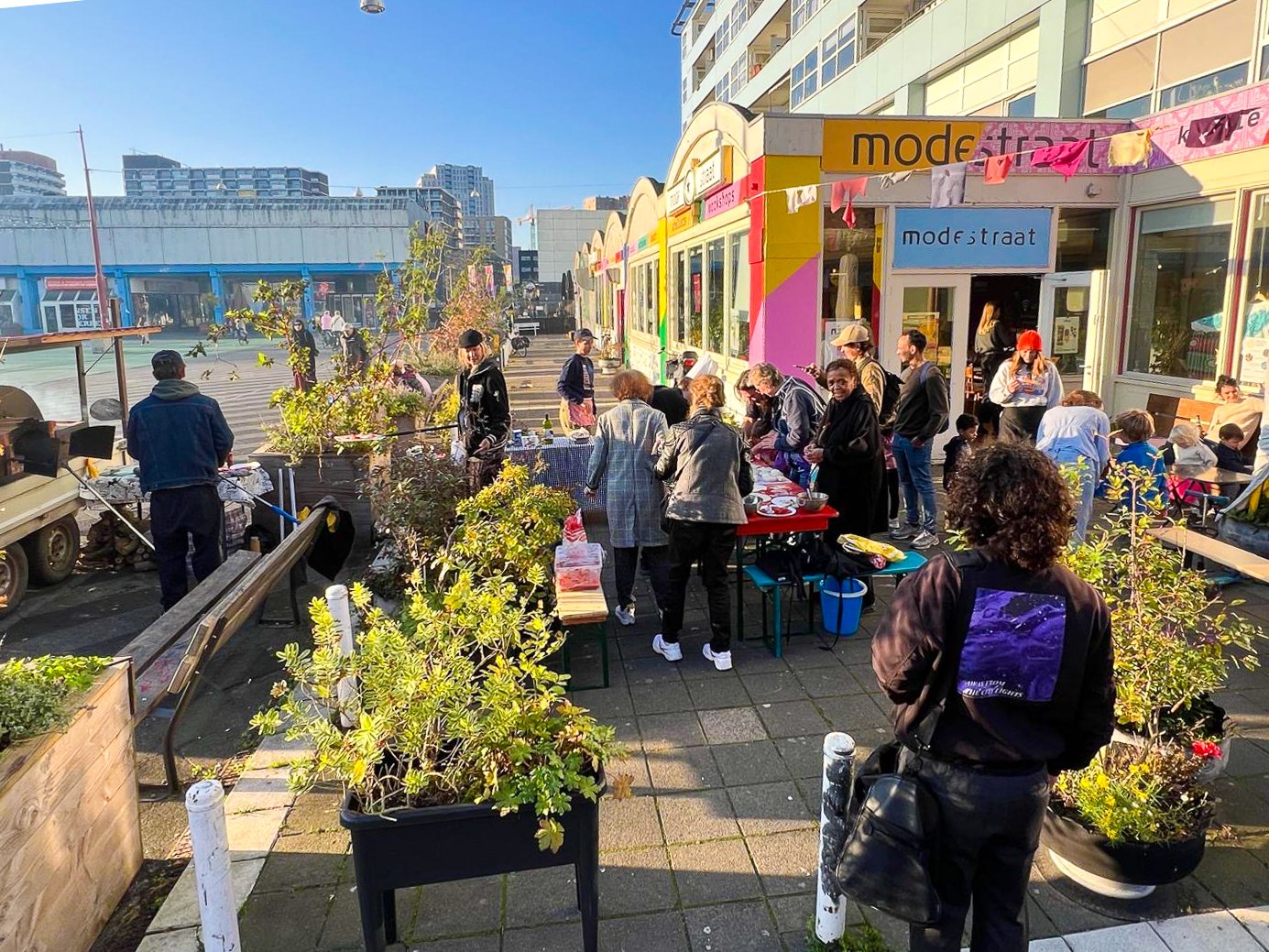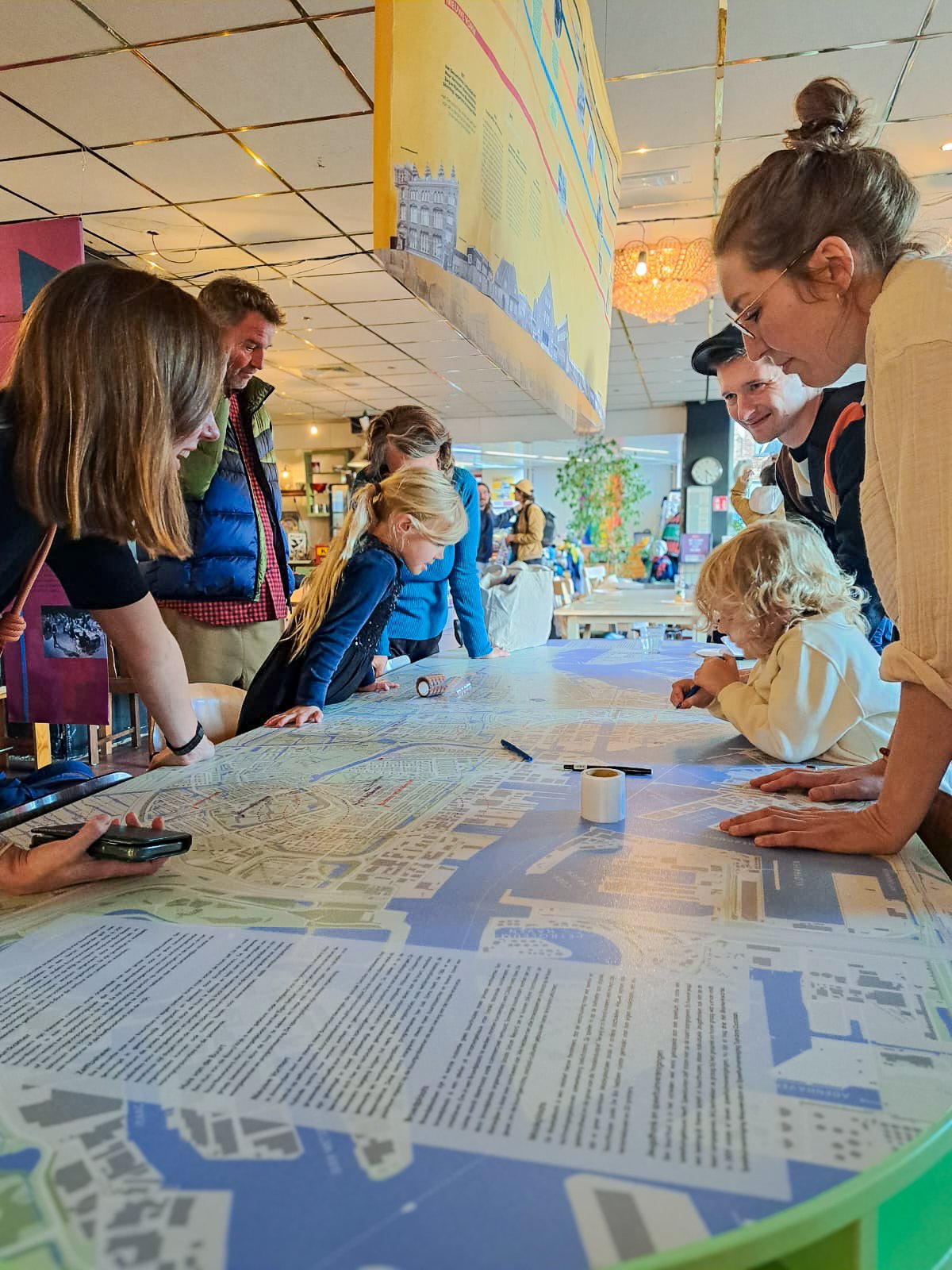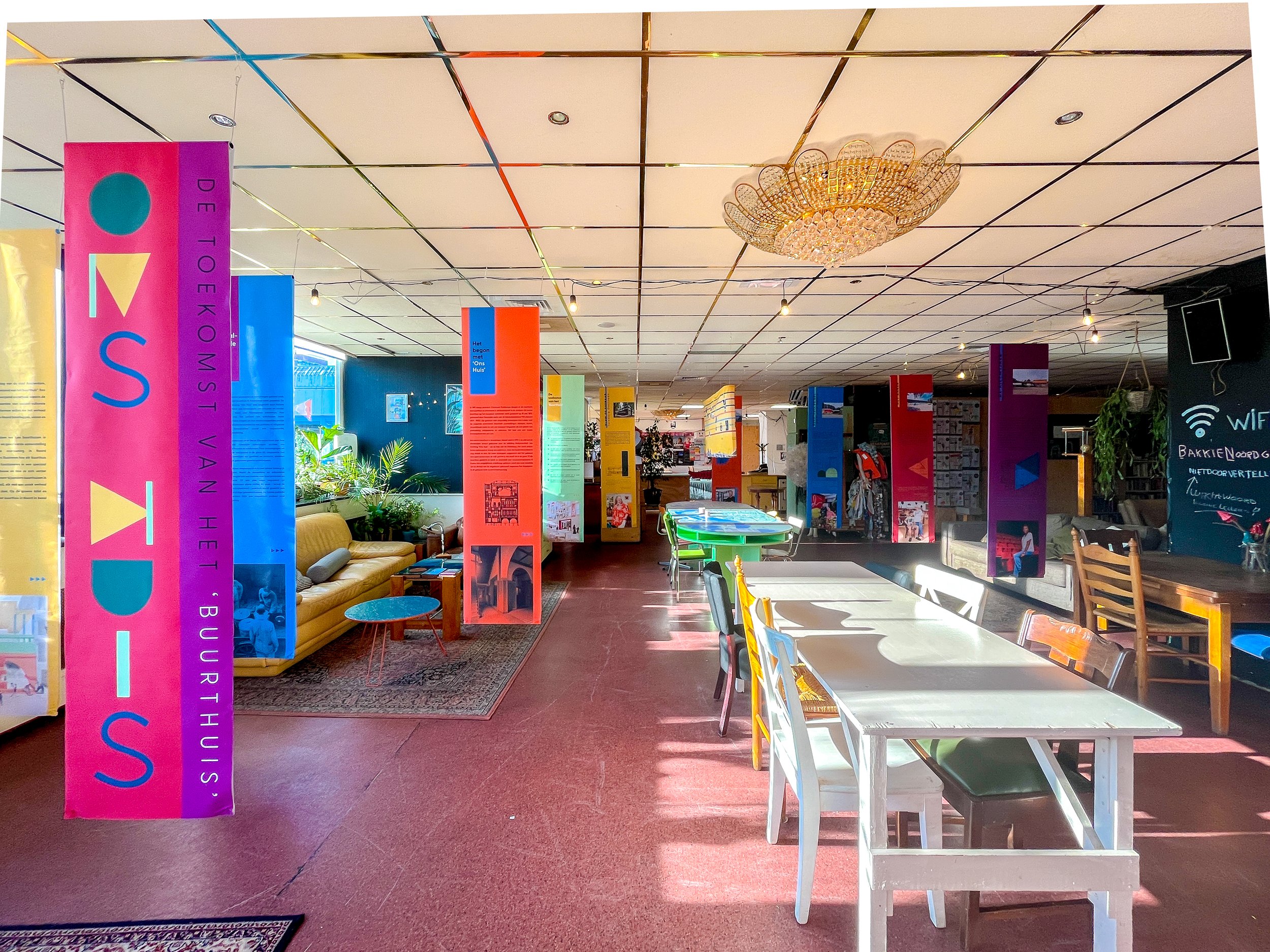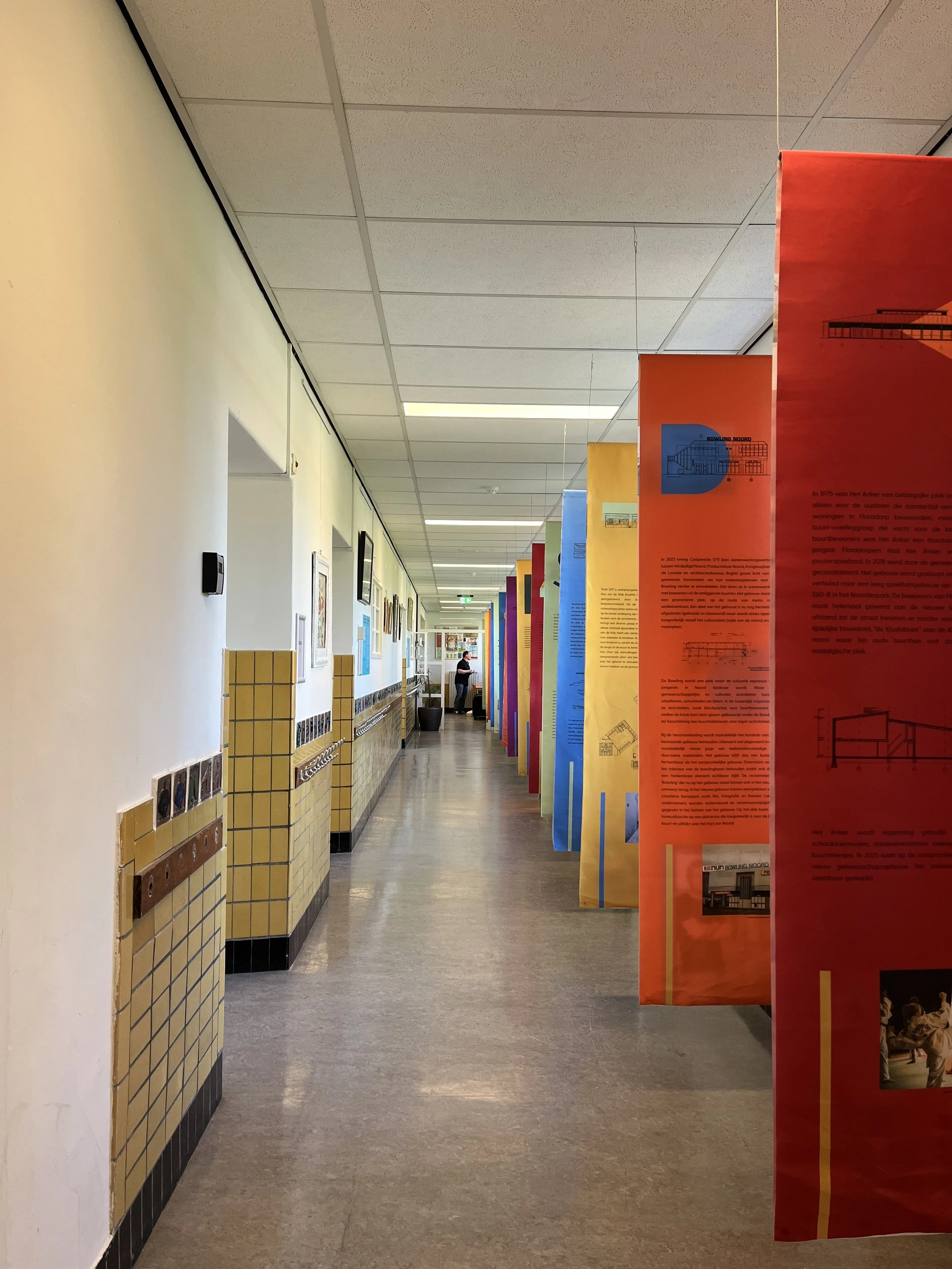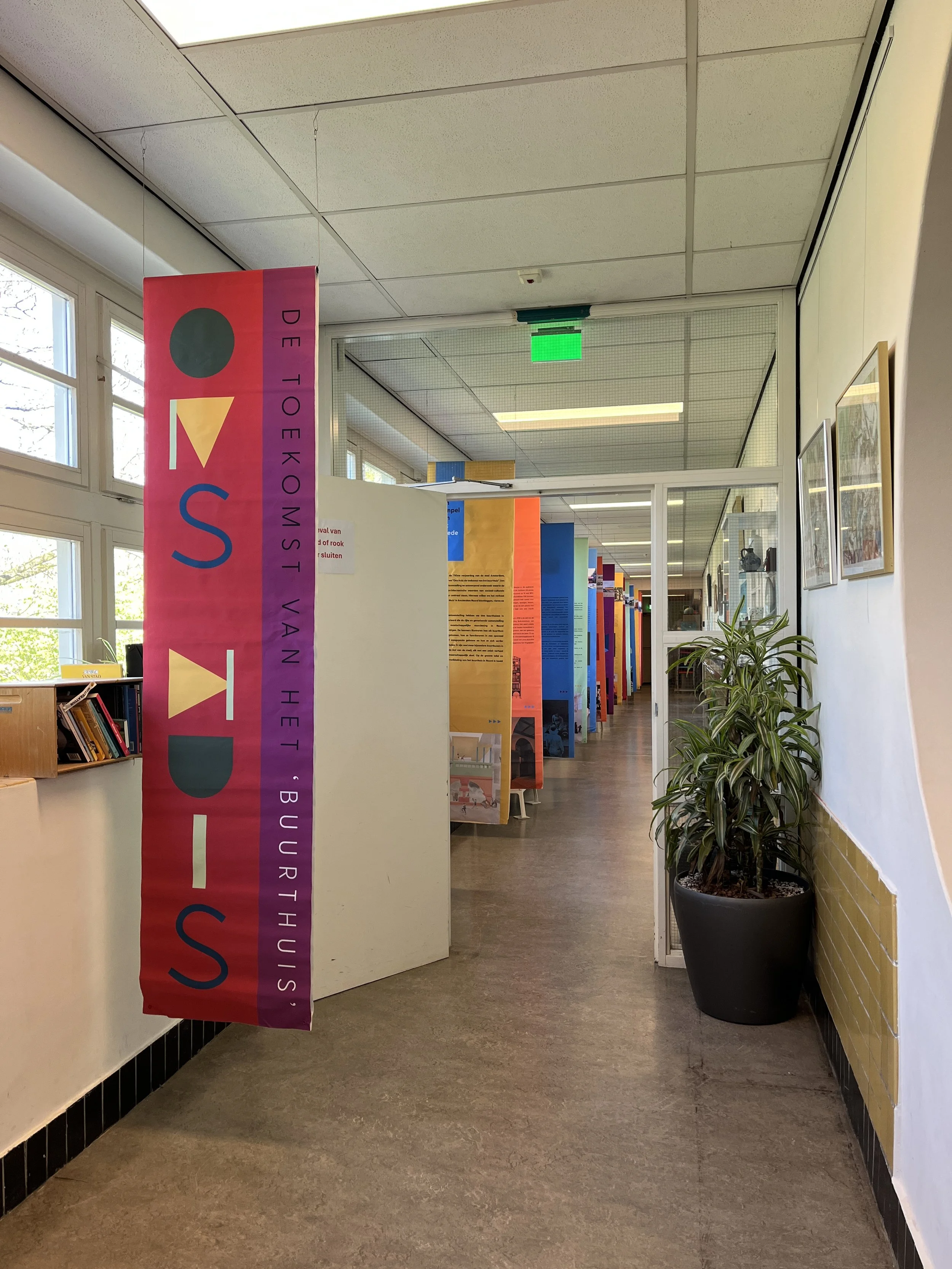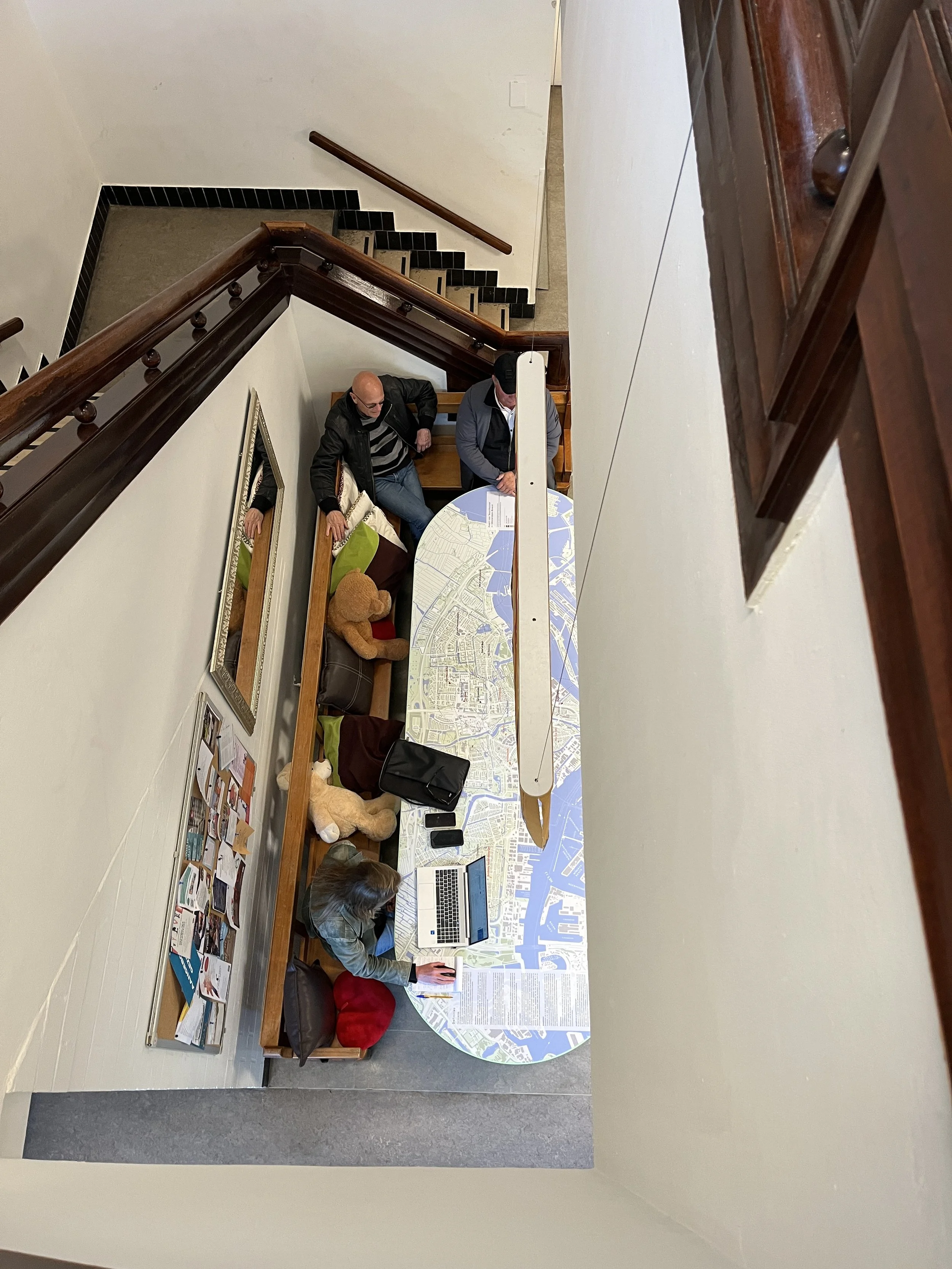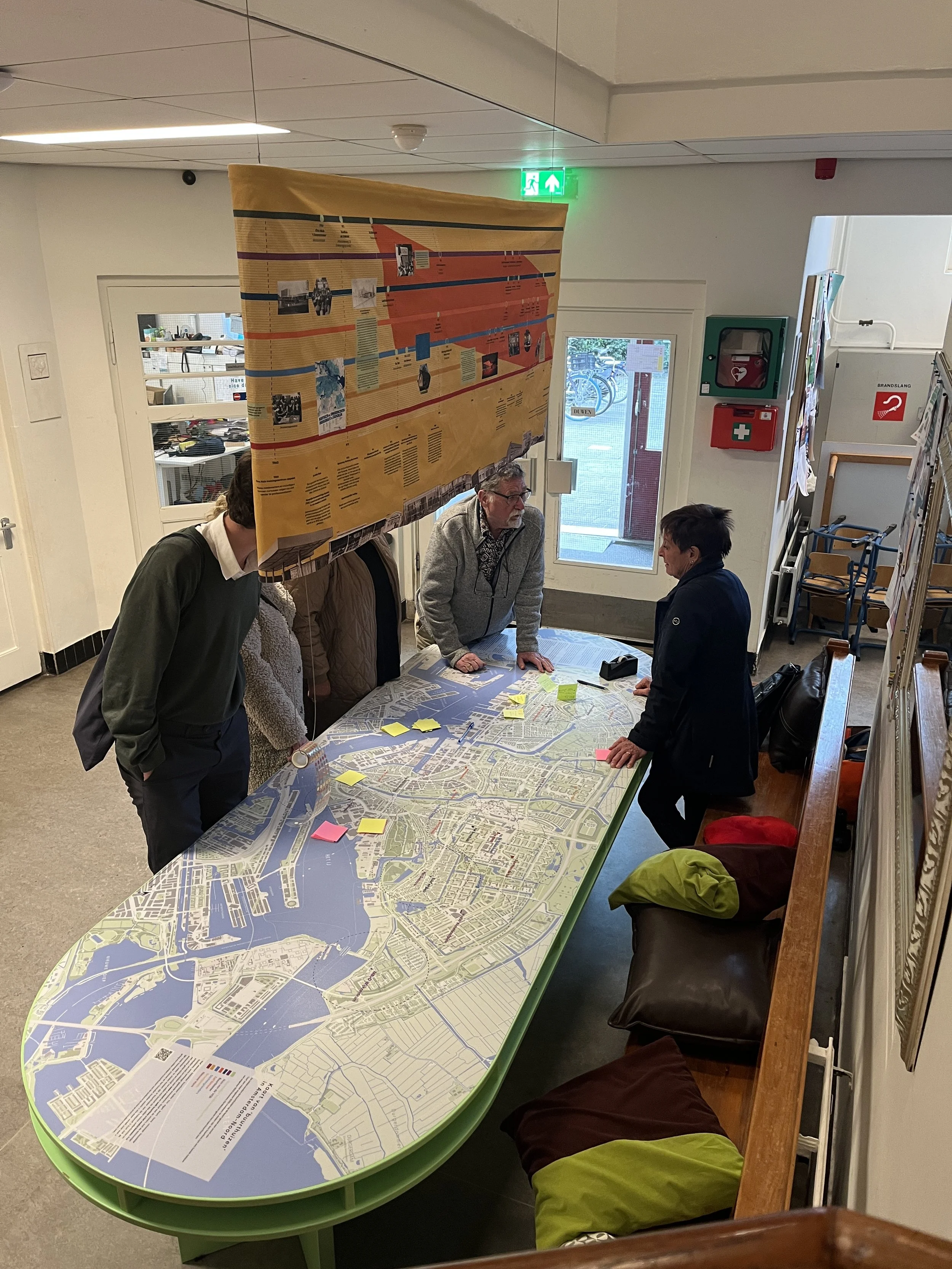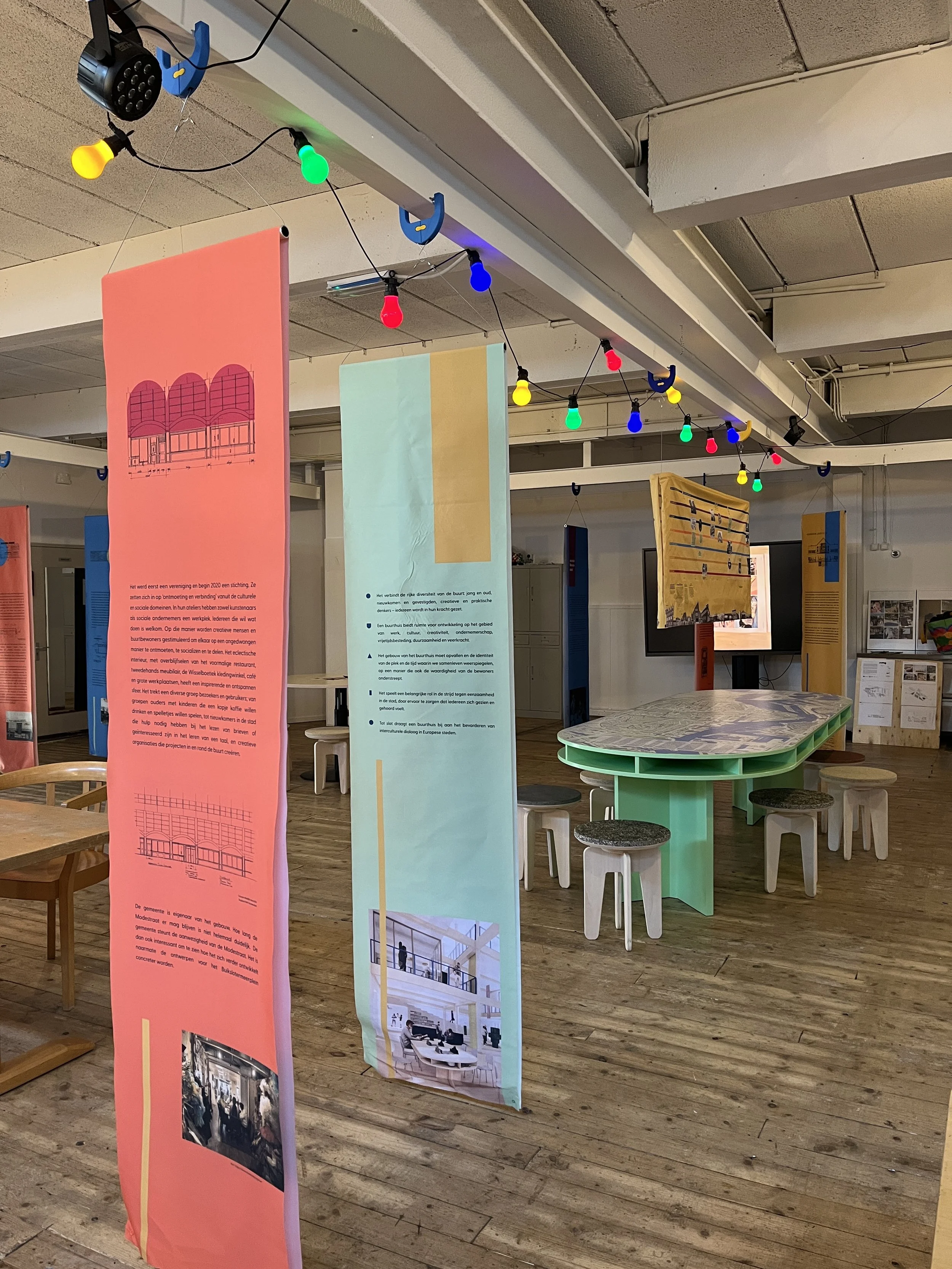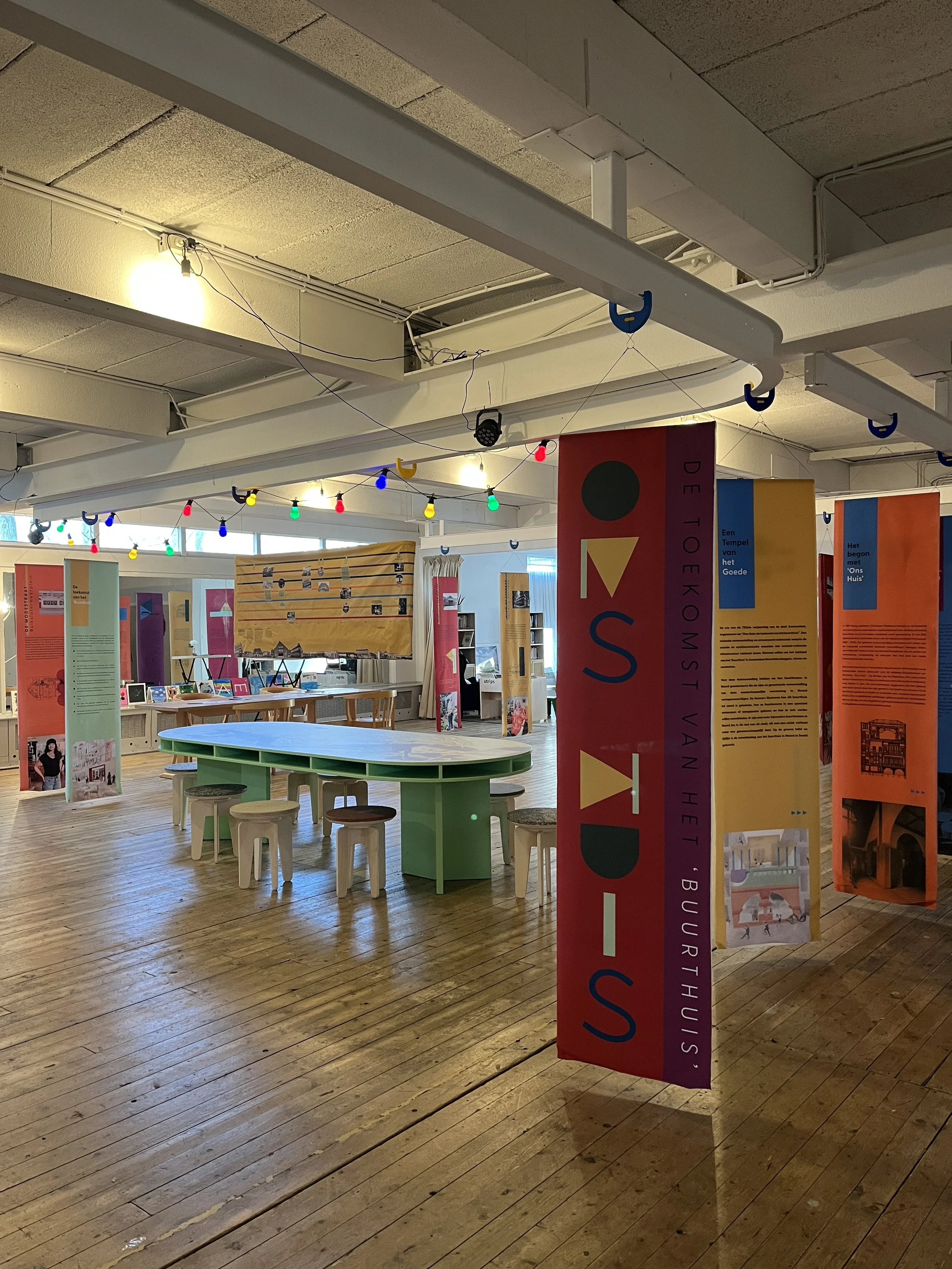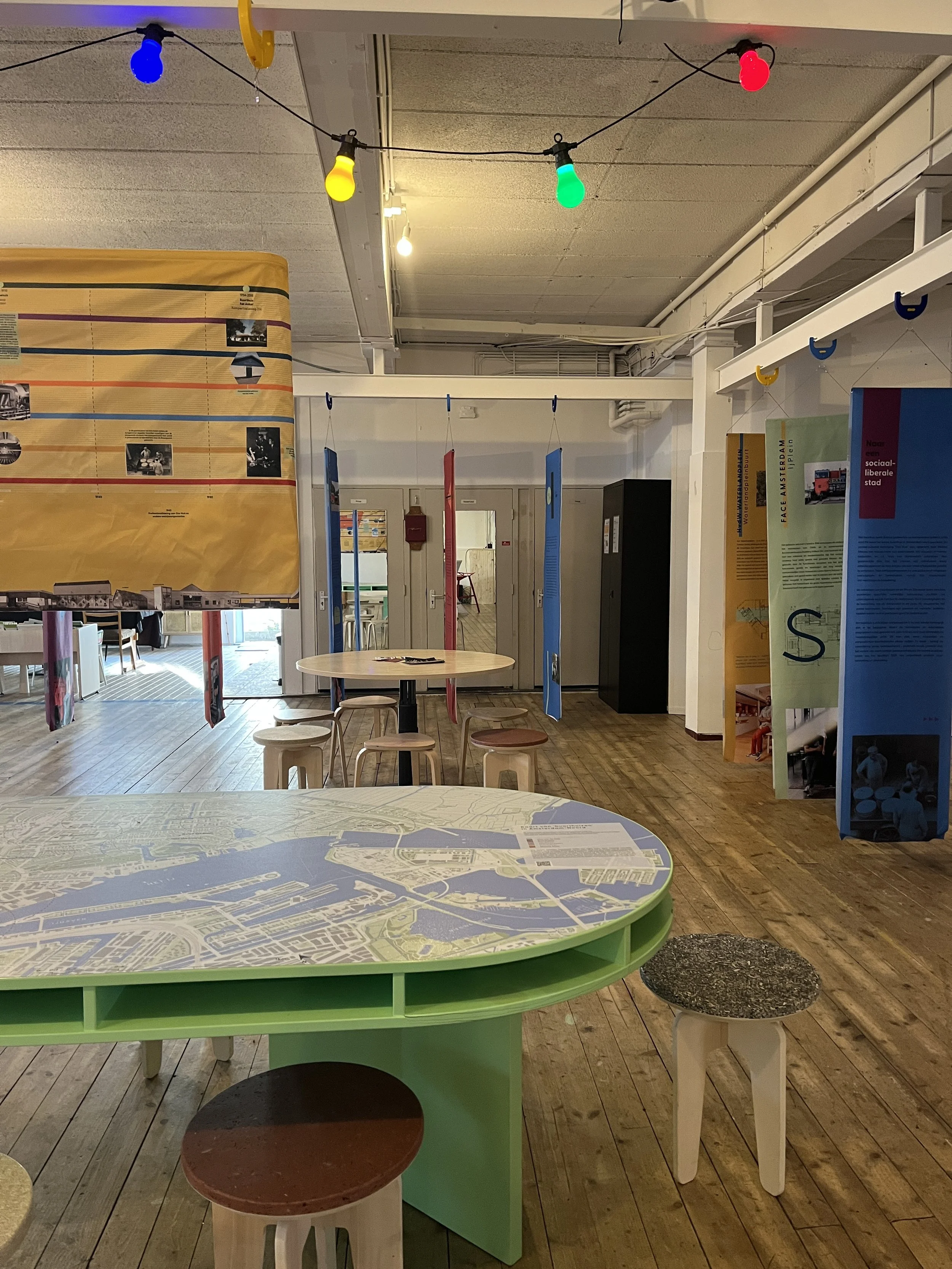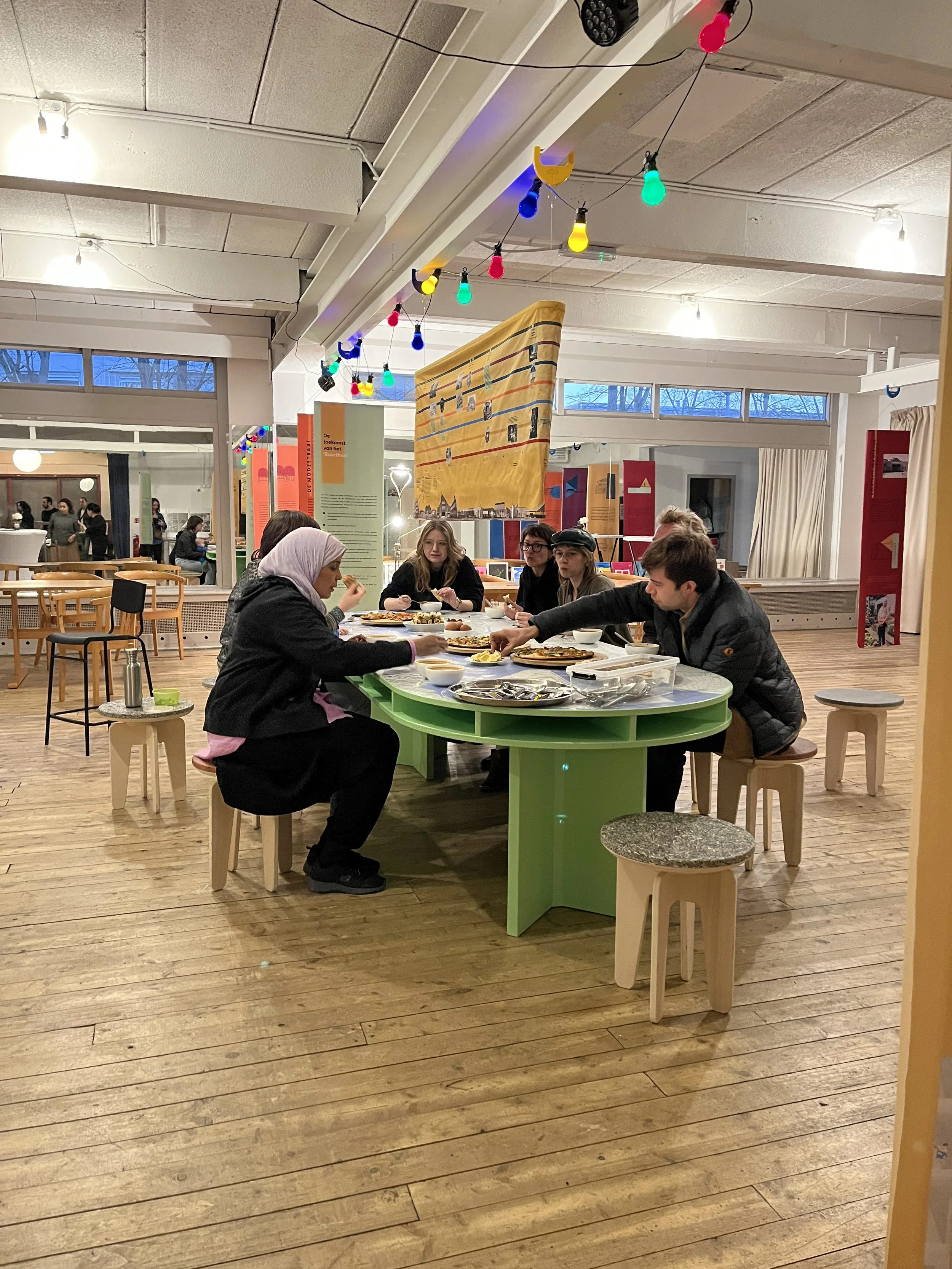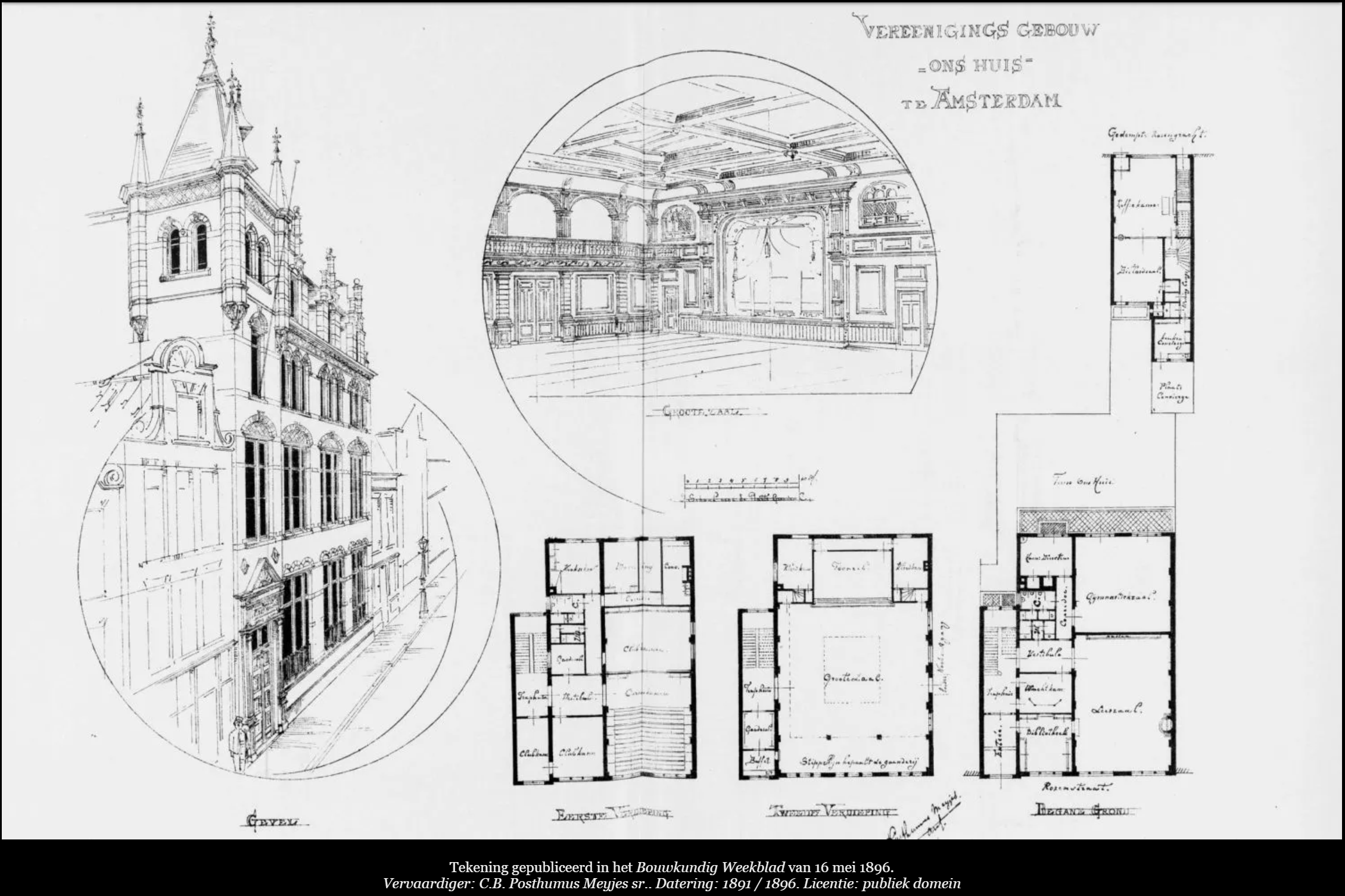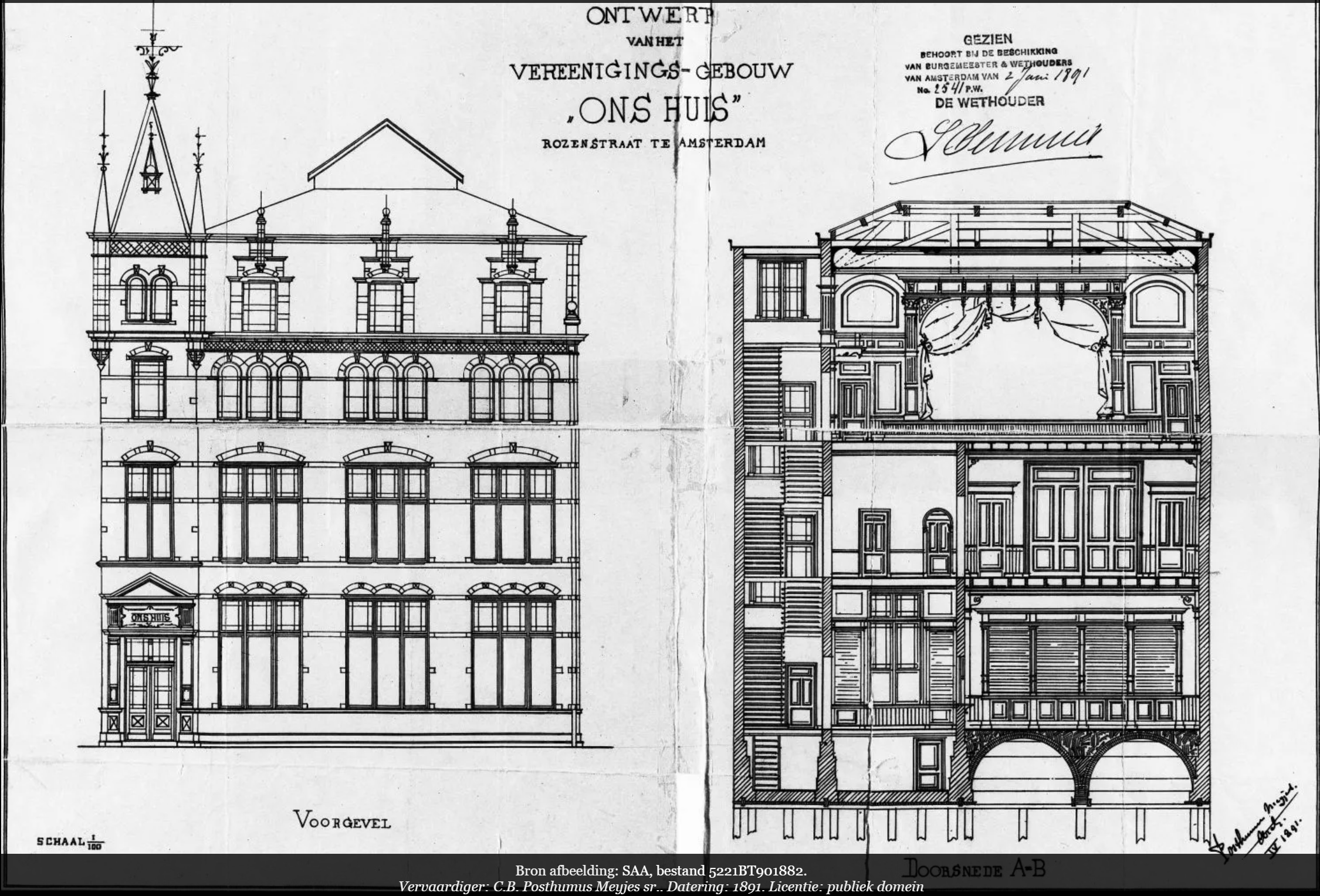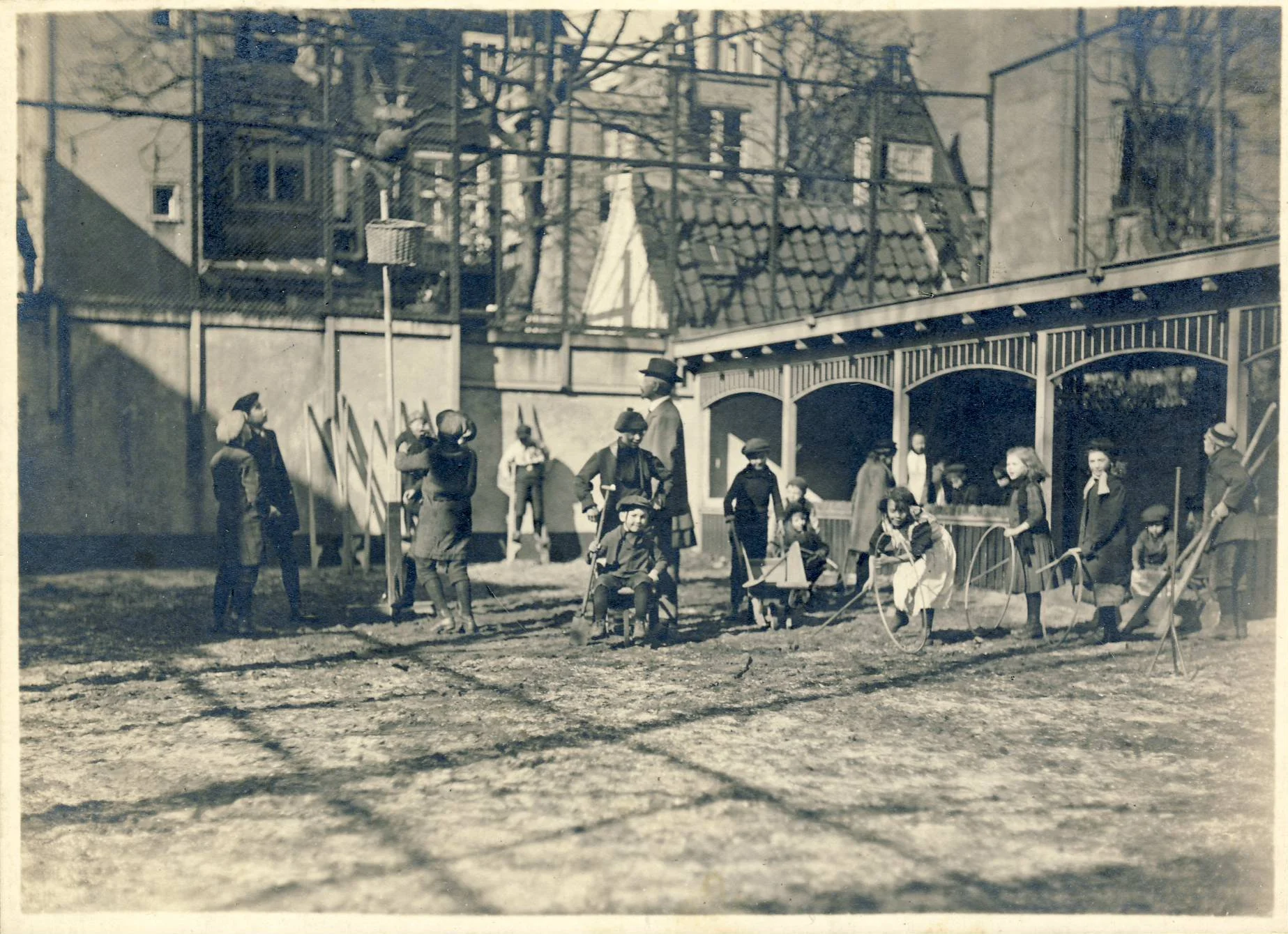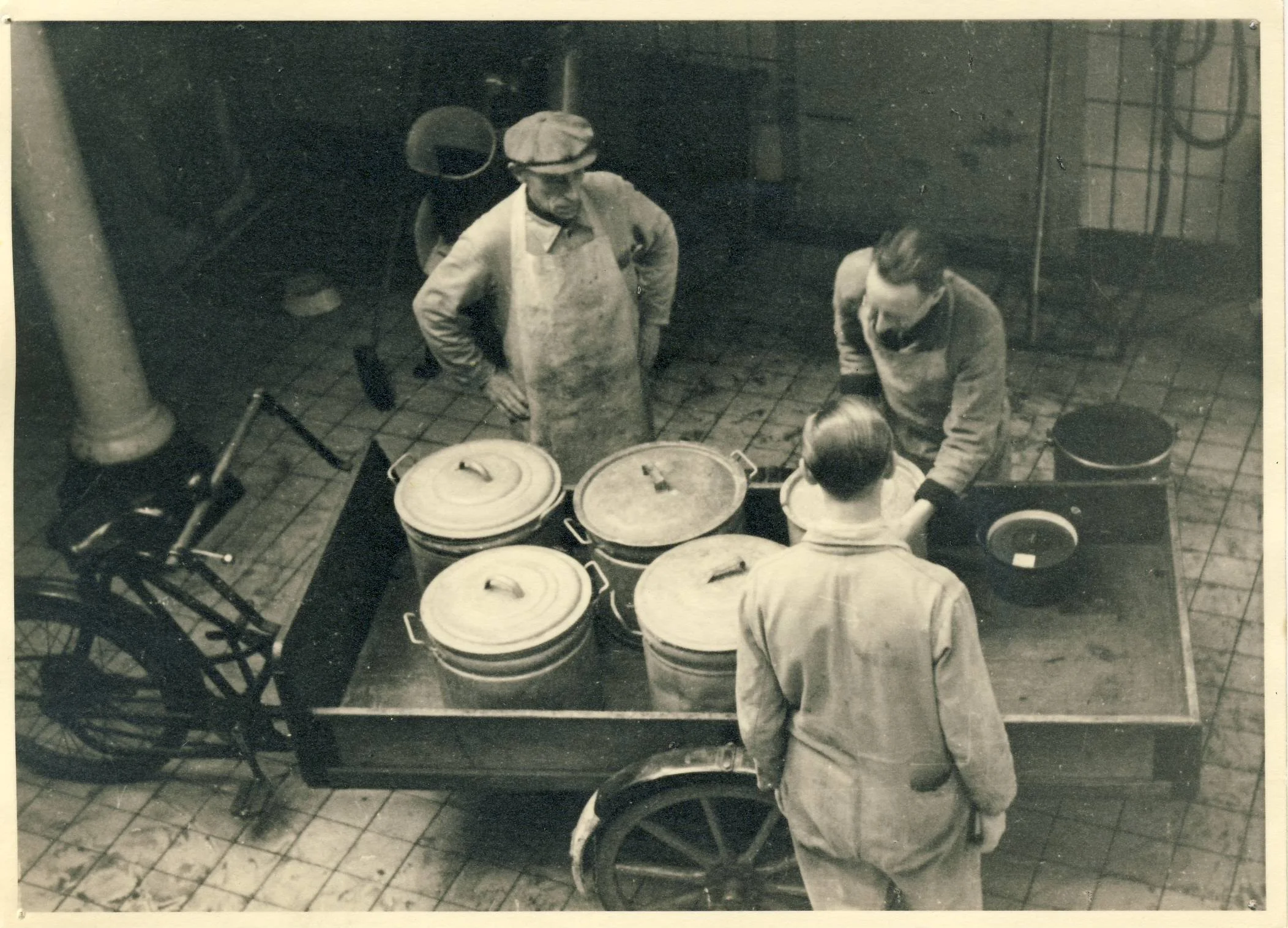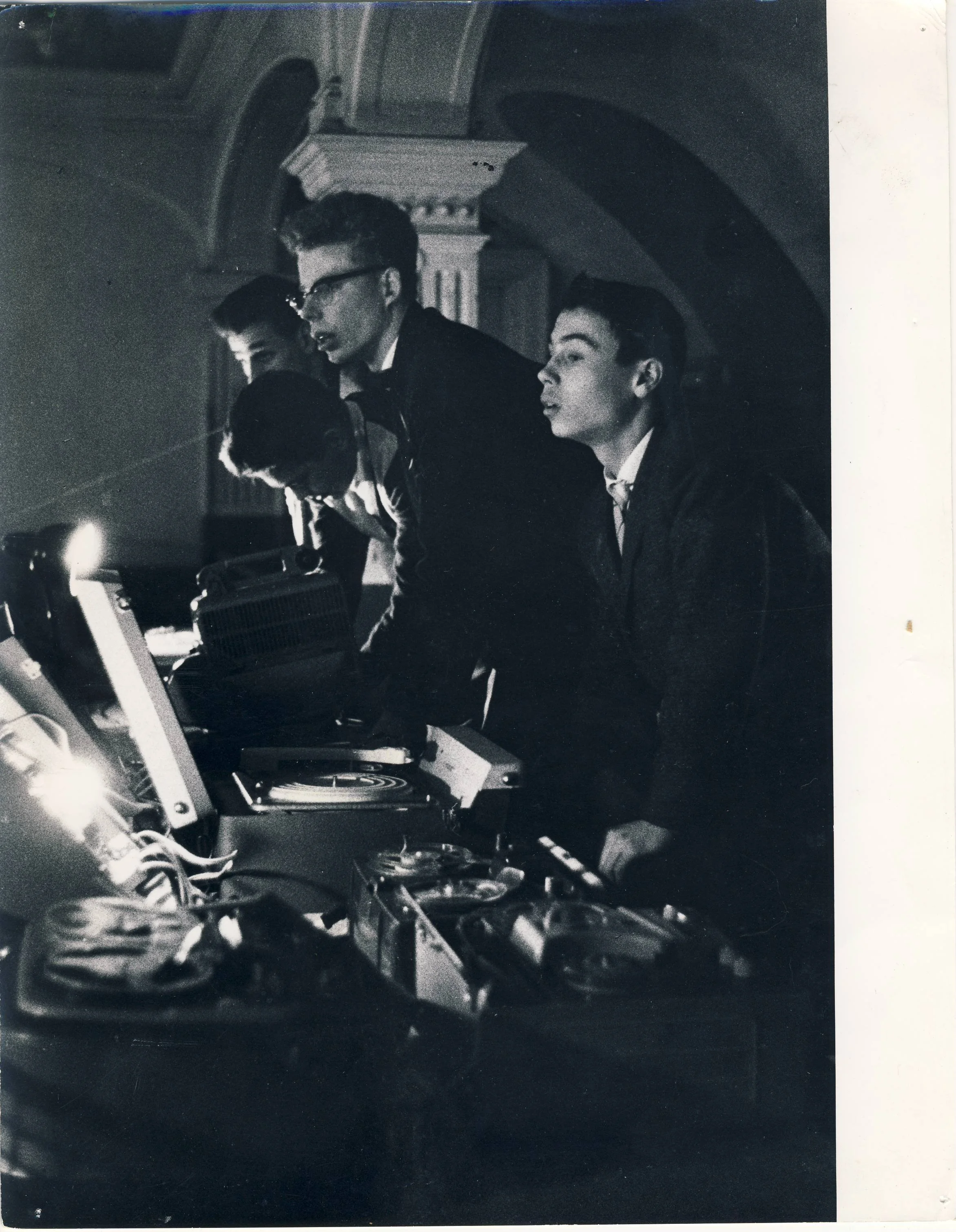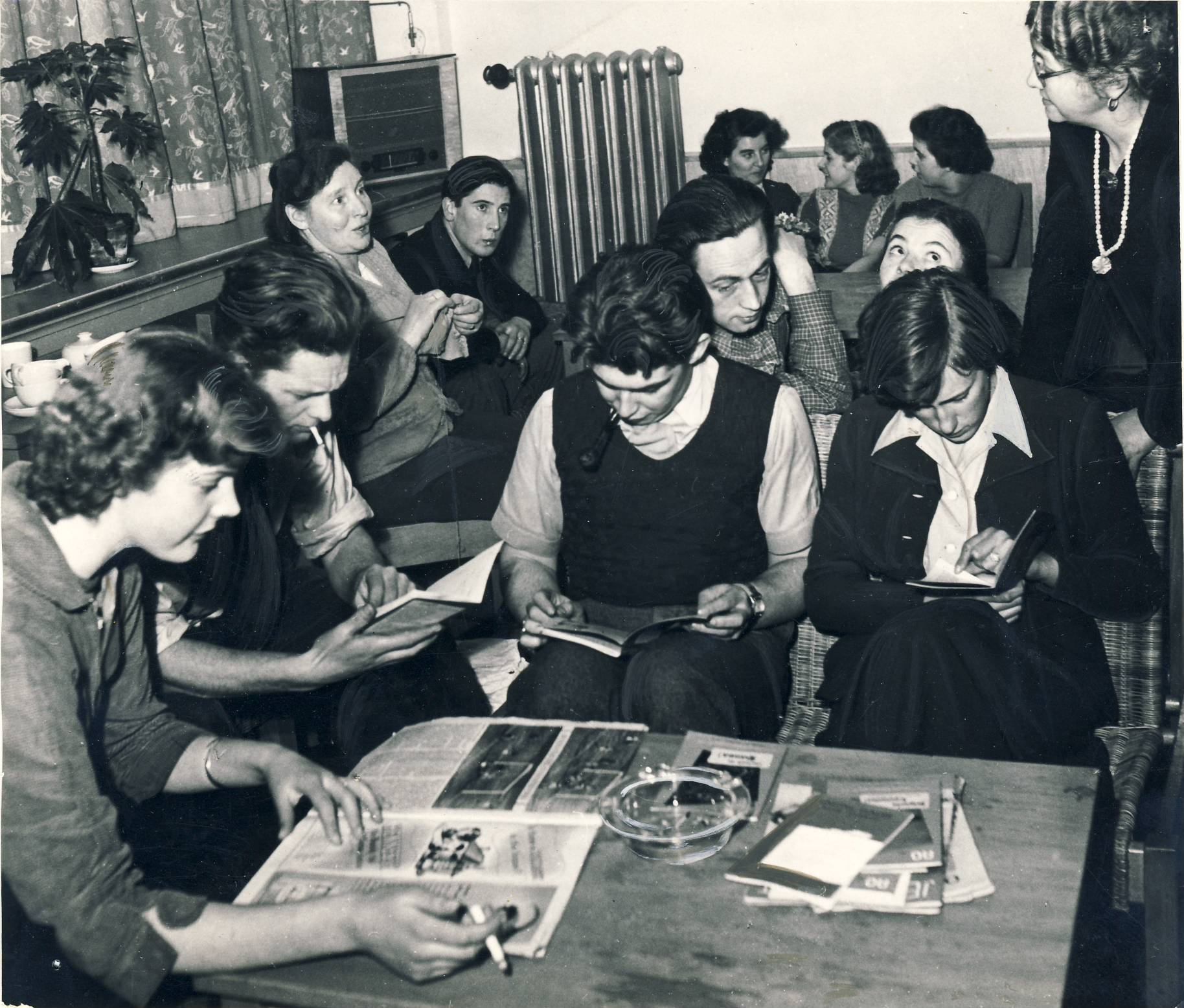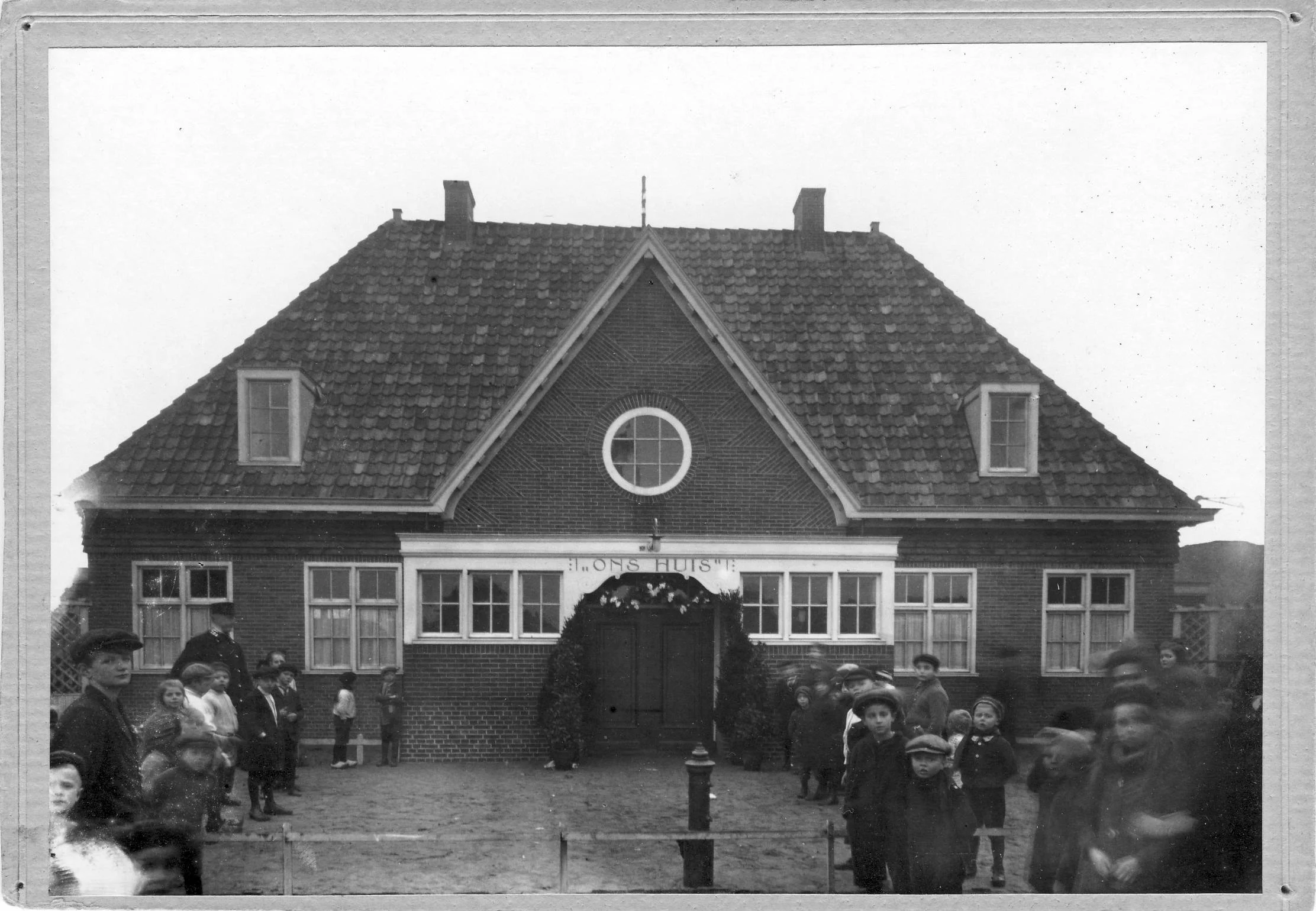‘Ons Huis: de toekomst van het buurthuis’ exhibition & design research.
Amsterdam-Noord has more community and club houses than other districts, partly due to a lack of social facilities and strong working-class communities. Over time, these places have acquired various names, such as Buurtkamer, Huis van de Wijk, Broedplaats, Buurthub, and Jeugdhonk.
Over the past year, our exhibition traveled through four community centers at different stages of transformation: Modestraat, Buurthuis de Bol, Huis van de Wijk De Evenaar, and the Rietwerker. Fifteen colorful banners celebrated the history of each center, and ten initiatives were highlighted through the eyes of their leaders and managers. These leaders are crucial: they provide direction, energy, and enthusiasm, ensuring that a building becomes more than an empty shell—often not even originally designed as a community center. Many initiatives temporarily operate in former schools, bowling alleys, or boxing gyms, with little certainty about the future, which often means the building dictates the program rather than the other way around.
Our exhibition looked to expose the stories of these Community Hubs, to celebrate them and start conversations on their future. Via a series of workshops at each exhibition location we co-created interventions in each buurthuis, as a conversation piece on Community Centre archtiecture as a whole. Together with inhabitants we developed tactile examples of a future “collective architecture”, in the form of 100 Tiles of Noord, made of klei from 20 different neighbourhoods around the Community Centres. See the Tiles of Noord page for more information on the workshop themselves.
——————————————-
Exhibition Locations
de Modestraat is temporarily located at Buikslotermeerplein; the site is under renovation, and it is uncertain whether Modestraat can return. The former bowling alley across the street is being redeveloped into a community center, which will be owned and managed by the neighborhood cooperative 5711. Buurthuis de Bol, founded in 2023 by residents of Kleine Wereld, demonstrates how residents themselves create a place for meeting and collaboration, though it has a temporary contract. Huis van de Wijk De Evenaar faces new challenges with its upcoming sustainability upgrades. The Rietwerker, built in the 1970s as a community center, will be replaced by a new building developed in collaboration with residents and NEXT architects.
————————————-
The origins of the Community Centre: “A Temple of Good”
History shows that the architecture of the community center is continually shaped by the ideals of its time. In 1884, the very first community center was established in East London: Toynbee Hall. It was founded by Samuel and Henrietta Barnett, together with students from Oxford University. Students and local residents lived together, shared knowledge and culture, and experimented with new forms of communal living. This “settlement house” became a model for later social centers in the UK and beyond. At the time, East London faced severe poverty and limited access to education and healthcare; Toynbee Hall provided a shared space for learning and meeting to reduce inequality. Following a renovation (2016–2022), it still serves this role through lectures, courses, and cultural activities.
In 1892, the first Dutch version opened in Amsterdam: “Ons Huis” in the Jordaan. Ons Huis on Rozenstraat was the first community center on the European mainland. The stately building, founded by Hélène Mercier and J.A. Tours, offered education, theater, music, and a meeting place for workers and their families. It was not a neutral hall, but a dignified, architecturally expressive environment that made the community visible. Other community centers soon followed in the city, including in the Staatsliedenbuurt and Spaarndammerbuurt.
The Vereniging Ons Huis, founded in 1891 as the starting point of community center work in Amsterdam, was dissolved in 1984, but the concept of the community center and its variants is more relevant today than ever.

